Using simple tools like levels, rulers and a plumb bob, along with some basic geometry, it is possible to measure an existing canoe by “taking its lines.” Over the next few months, Museum staff and volunteers will be measuring and drawing this historic lapstrake canoe in the Preserving Skills gallery.
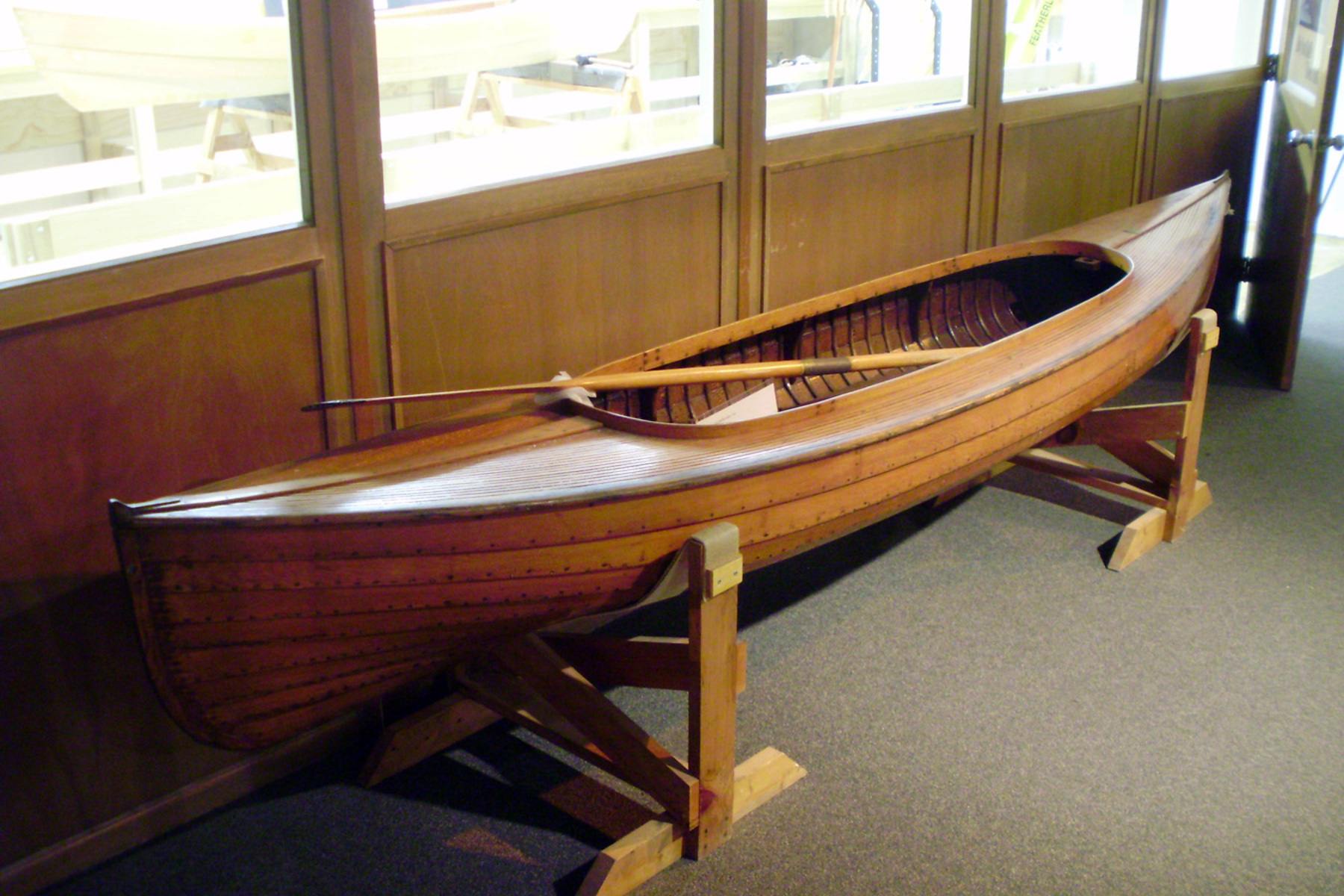
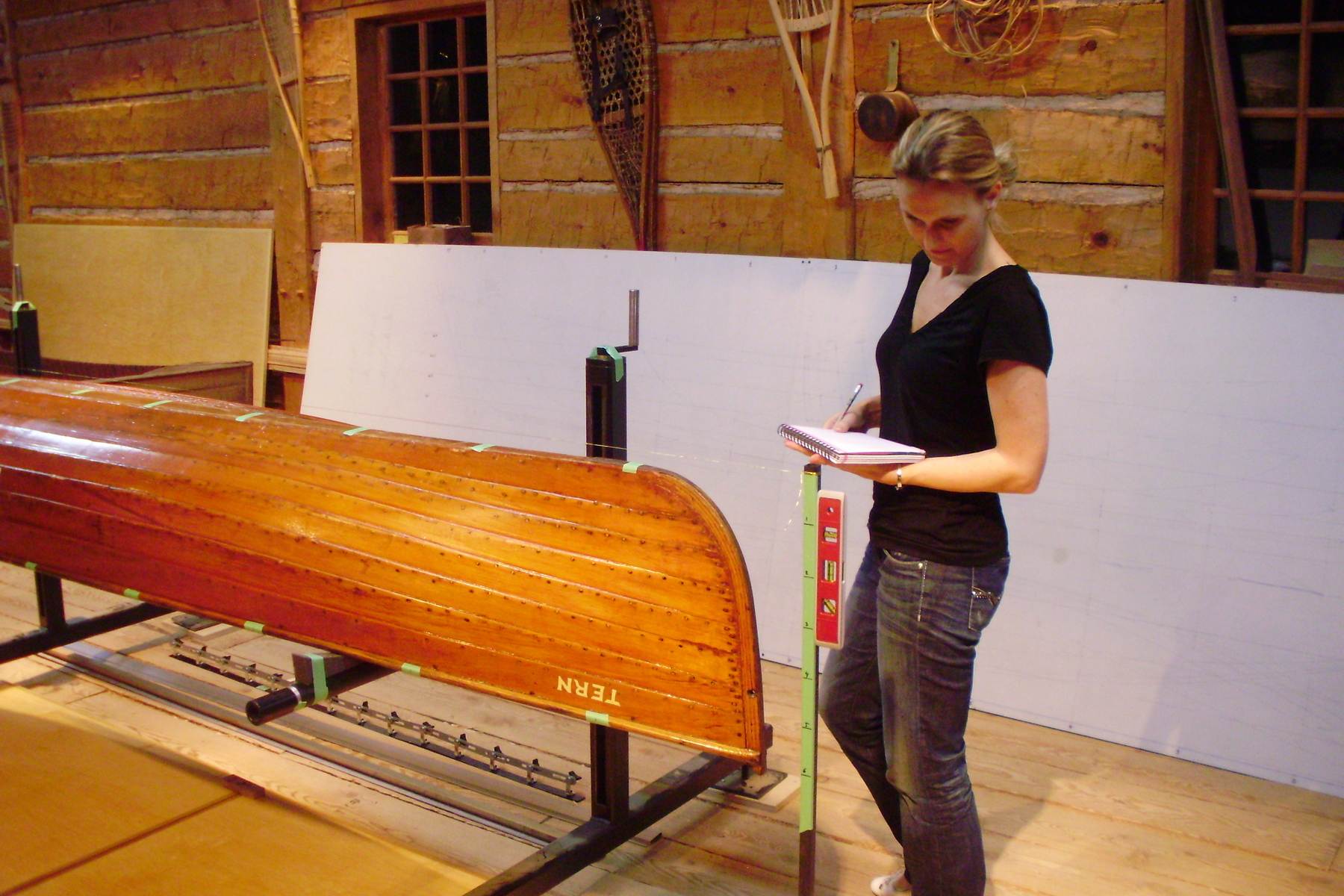
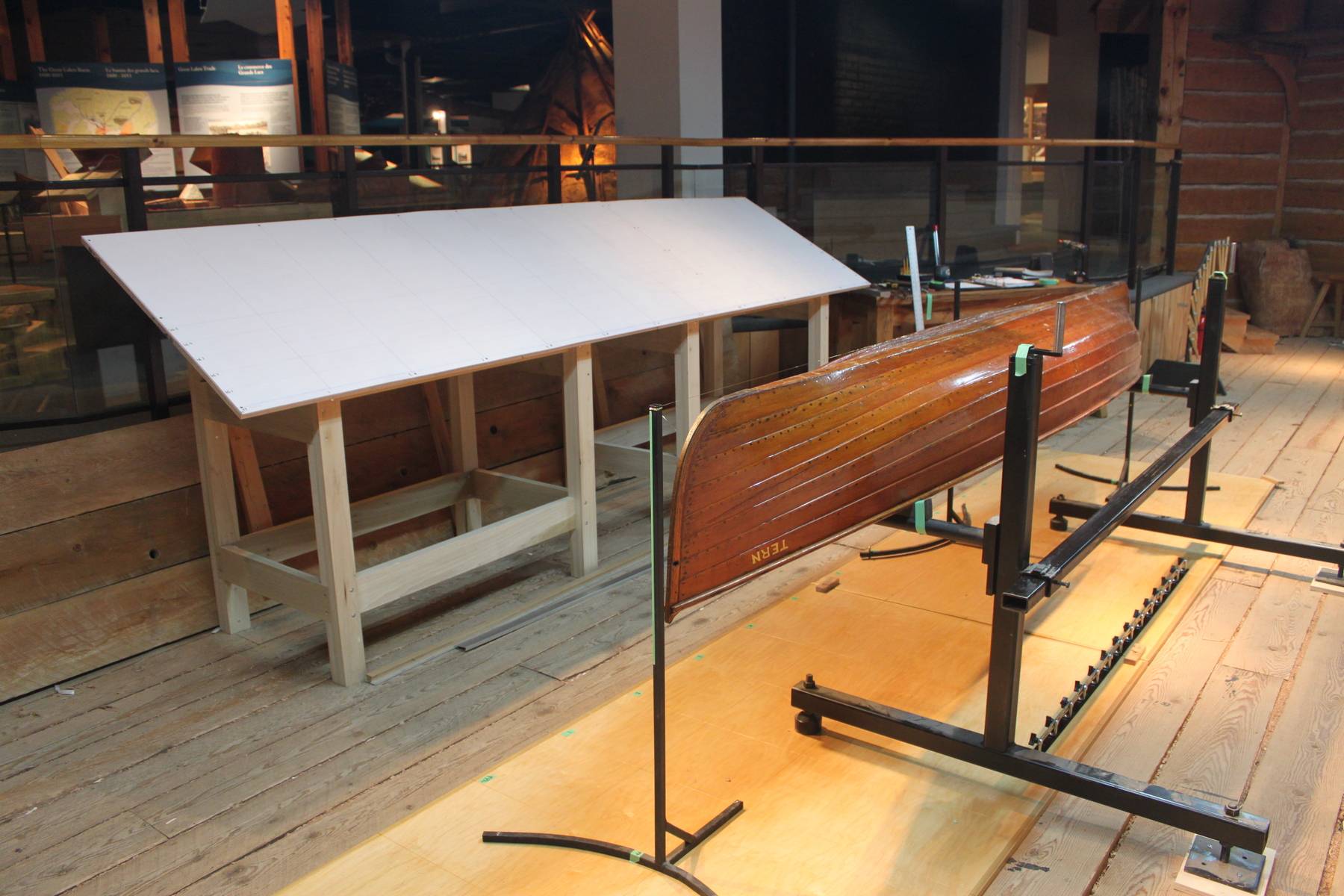
Sometimes, the original plans from which the canoe was built have not survived, and all we have is the canoe itself. It is also possible that the canoe wasn’t originally built from plans. In either case, measuring and drawing, historic canoes, through a process known as “watercraft documentation,” is an important part of a museum’s stewardship of its artifact collection. By drawing plans, taking photographs and making notes and sketches of particular details, the museum can assemble the information necessary to build a copy of the canoe for use in on-water programming.
If the canoe is unique and not one of a series, this documentation is also an important safeguard against possible loss or damage to the original and it means that information about the canoe can easily be shared with researchers. This process of “lines-taking” also involves “lofting,” another important step in canoe or boat building. In lofting, key lines defining the shape of the hull are drawn full-size showing three views of the hull: top, side and end. Together, these three views define the hull shape and give an experienced builder enough information to create an exact copy of the original.
Though it can look complicated, lines-taking is really just a matter of setting up a grid above, below and to one side of the canoe, and measuring in from the grid until you hit the hull. These measurements are then drawn on the large drafting board to build up a complete picture of the hull.
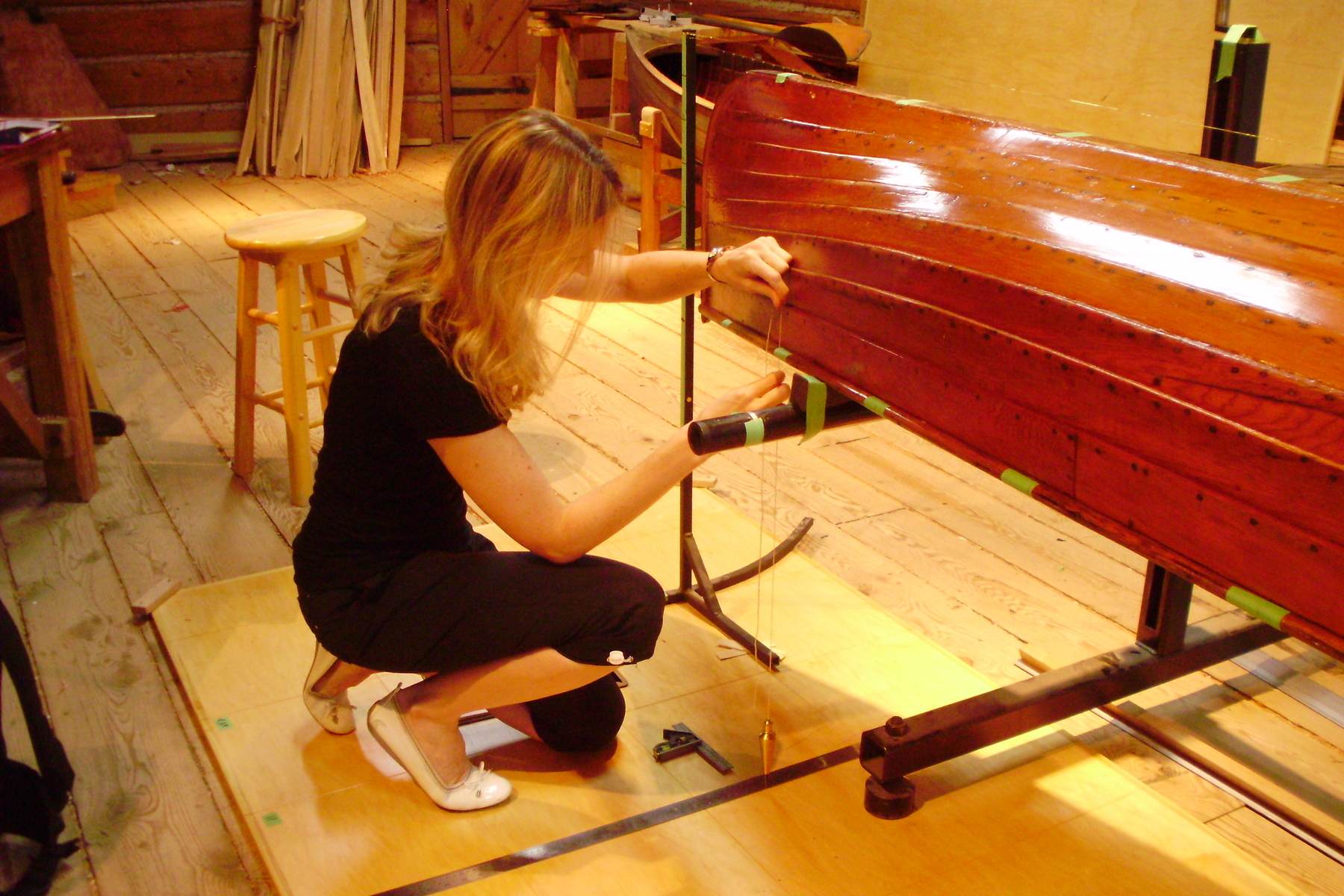
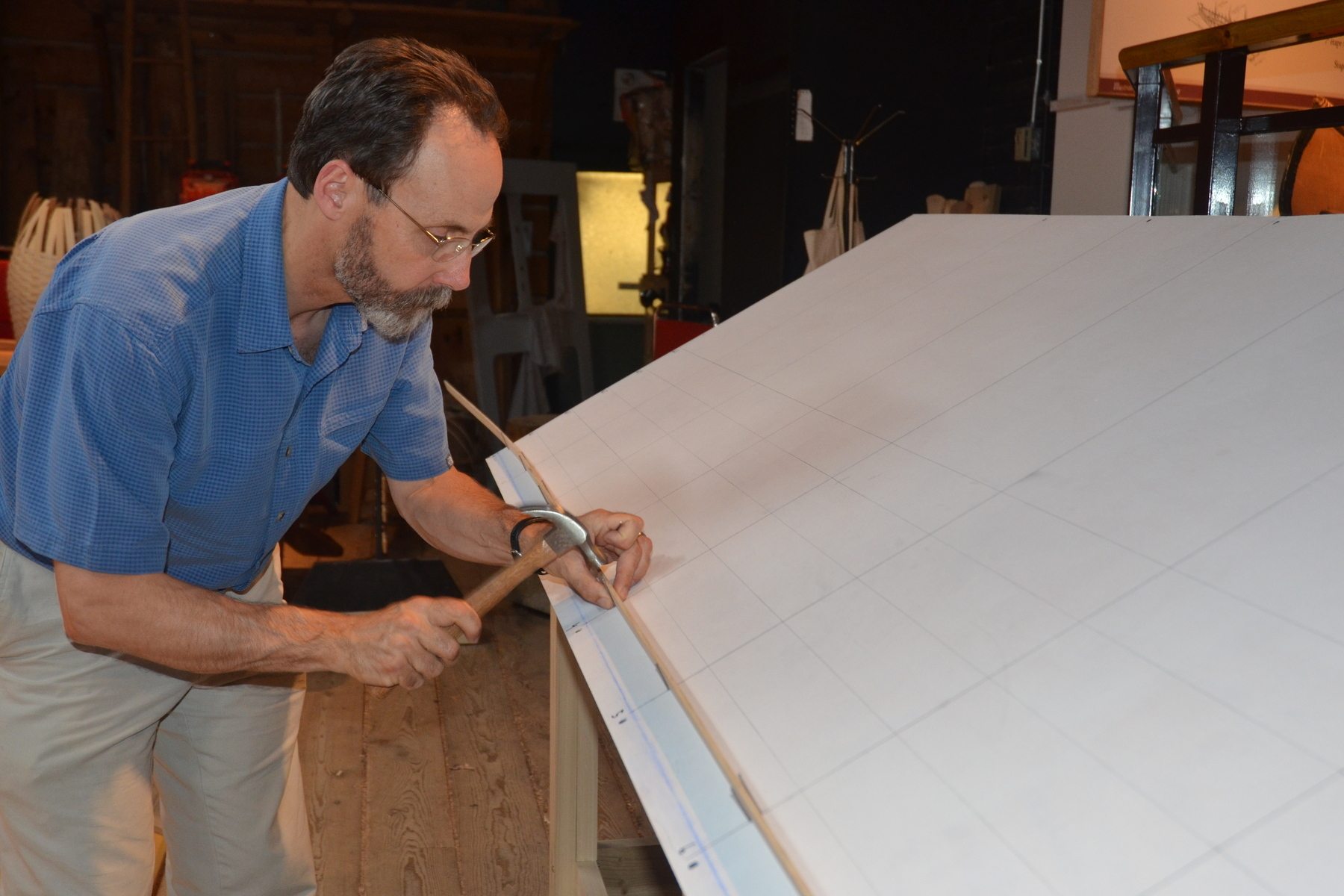
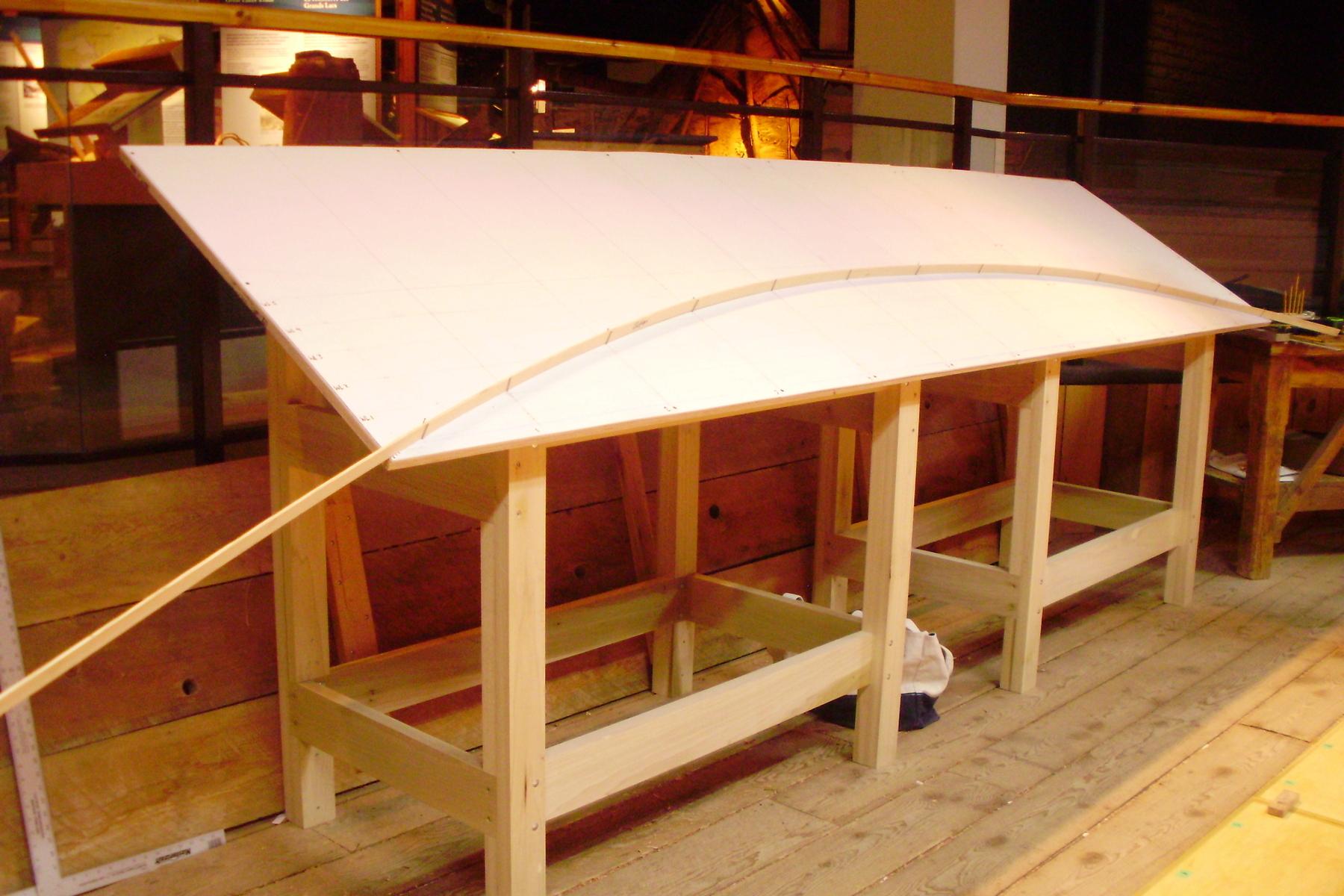
Drop by and see the progress the next time you’re at the museum!






